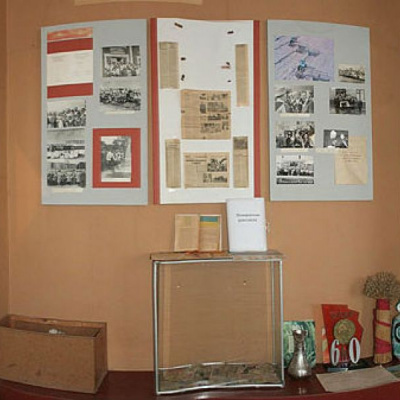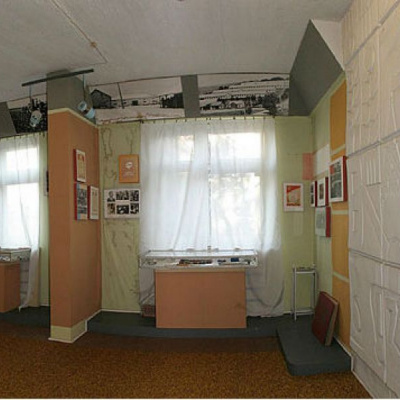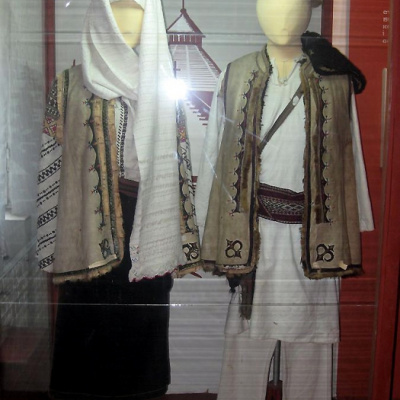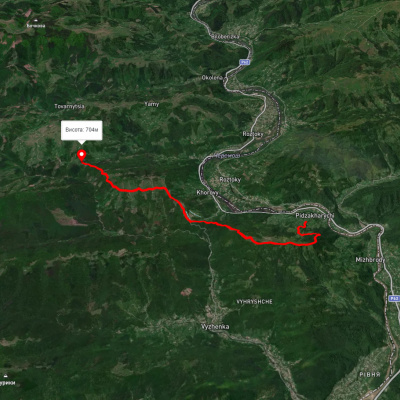Museum of History, Valyava
If you're in Kitsman, don't miss a chance to visit the neighboring village of Valyava, which is famous for its church. There is also the Valyava History Museum with a very interesting exhibition for a village museum. So it may come as a pleasant surprise to you.
The museum is located in 5 rooms on the second floor of the administrative building in the center of the village. The first hall will tell you about the ancient history of settlements on the territory of Valiava, archaeological expeditions in the area. Going to the next hall, you will get acquainted with the ethnography of the region, the everyday life of the locals, and their customs. A separate corner of the exhibition is dedicated to the history of the local church (1778). The ancient Gospel of 1764, ancient icons, and church utensils will definitely attract your attention.
The third exhibition hall tells visitors about the times of the Second World War and the participation of the villagers of Valiava in it. The last hall houses an exposition in memory of the writer Vasyl Kishkan, who was both the founder of the museum and the headmaster of the local school.
The most interesting exhibits of the museum:
- Mammoth bones, which are presented in the first hall of the museum, representing the history of the village of Valiava from primitive times to 1848.
- An ancient wooden candlestick with icons and other religious relics that were donated to the museum by the village priest.
- "Baba Olya" is the name given to a mannequin of a woman spinning yarn in early twentieth-century clothes.
- Miniatures of the Kitsman railway station from the second half of the 19th century, a peasant house from the 14th and 15th centuries, a forge, and a primitive man's dwelling.
- Money of different historical periods - bills and coins, in particular, Polish zlotys, Romanian lei, Austrian crowns, Russian chervonets and rubles, because Valiava was ruled by different states in certain historical periods.
The museum was inaugurated in 1985 thanks to the efforts of local resident Vasyl Kishkan. Together with the museum staff, he gathered a considerable collection of antiquities in the village and its surroundings, managed to organize it and present it to the public.
Here you can also see the interior of a peasant's house, household items, household utensils, ancient dishes, tools (iron-lantern, scythe, chain, cooking utensils, etc.).
Some materials tell about the construction of the Church of the Assumption of the Blessed Virgin Mary (1778) and the religious life of the community. There is also information about the school principal, orders and decorations of the head of the collective farm, Honored Worker of Agriculture Dmytro Rozhko, who built and opened the museum, and the founder of the museum Vasyl Kishkan (1929-1992) and his novels Black Ravens and Cold Winds.
Another hall is dedicated to the modern period of development of the village of Valiava. Not so long ago, it was replenished with new exhibits on church and religious themes: everyday and festive vestments, an ancient wooden candlestick, icons, a censer, and a cross. They were donated to the museum by the village priest.
The institution is located in the center of the village, which is conveniently accessible from Kitsmani, where suburban buses run regularly. If you are traveling by car, you need to follow the Chernivtsi-Ternopil highway to Kitsmani, where you should turn towards the village of Valiava.
Opening hours ofthe Valyava History Museum: daily from 9:00 to 18:00, weekends - Saturday, Sunday. Please note that the museum has a lunch break from 13:00 to 14:00.
Admission: free of charge. By the way, the tour will be conducted by local schoolchildren who take care of the museum.
Valiava could have gotten its name from the Romanian word vale, meaning valley. Valiava is a settlement that lies in a wide valley near the Voluvka stream. The village was mentioned in 1413, as well as the neighboring town of Kitsman, in the charter of Alexander the Good.Valiava is located in the Kitsman district, Chernivtsi region. The distance to the regional center is 25 km. The population is 1,560 inhabitants.The wooden Assumption Church of 1778 in the center of Valiava. The building is based on an archaic type of three-domed church with square log cabins covered with a high pitched roof with a large overhang covering the low cut pyramidal tops of the altar and the narthex. Unlike classical examples of "hut" type churches, the more developed top of the nave cuts through the roof massif, protruding from it as a wide quadrangle, which turns into an octagon with a low hipped end crowned with a dome. The church has a pyramidal silhouette. The bell tower, which is characteristic of Ukrainian wooden architecture, is located to the south of the church and was built in the nineteenth century. It is wooden, two-tiered, frame, and covered with wood. The second tier of the bell tower has an arcade for bells. The wide inter-tiered hall and low hipped roof are covered with shingles. The second gable has voice boxes. Throughout its existence, the church was constantly functioning. On the occasion of the 230th anniversary in 2008, restoration work was carried out: the roofs of the church were covered with tin.In the center of Valiava there is a nineteenth-century residential building (now a kindergarten), and a museum of village history, established in 1985. On the outskirts of the village there is a cross commemorating the abolition of serfdom in 1848.Valiava is the birthplace of the writer and teacher Vasyl Kishkan (1929-1992), and the famous Romanian writer Olga Koba was born and worked as a teacher here. The Honored Worker of Culture of Ukraine Valerii Koshman worked here fruitfully. Maria Prokopets, a candidate of medical sciences, is a native of Valiava.The village has the following institutions: a post office, a medical facility, a preschool, an educational institution, a club, a library, and a local history museum. The main population is Ukrainians. The villagers are engaged in farming and animal husbandry, entrepreneurial activity and work in various institutions.
Accommodation around Museum of History, Valyava:
Які маршрути проходять повз Museum of History, Valyava?
Пропонуємо пройти такі туристичні (пішохідні) маршрути через/біля Museum of History, Valyava: пер. Німчич - Протяте Каміння




